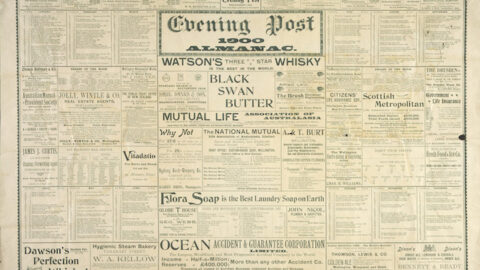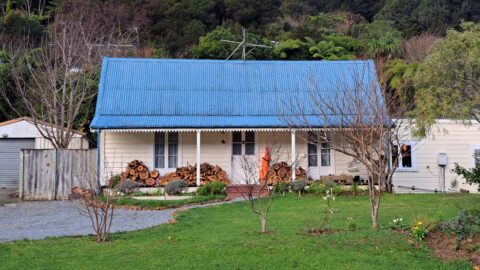THE GOLD DISCOVERY AT WAIWETU.
A special correspondent of the Evening Post visited the locale of the alleged gold discovery yesterday, and reports as follows:
“It is really worth while for anyone interested in the Waiwetu gold discovery to pay a personal visit to the locality. On reaching the Lower Hutt by rail, the best plan to adopt is to follow the main road a little distance past Mr. Cleland’s store. A branch road then leads off to the right in the direction of Waiwetu. Following that for a mile or so, the Waiwetu River is reached by passing through a paddock belonging to Mr. Brown. There is a ford to the river at the foot of the paddock, which I crossed, and then made for Mr. Knight’s house, a few hundred yards to the right.
Mr. Knight was very courteous and obliging in affording me the fullest information and assistance. We struck inwards a short distance in the direction of the range which divides Waiwetu from Wainui-o-mata, and soon reached the stream in which the appearances of gold were discovered. This stream, which takes its rise in the range a considerable distance up, flows downhill to the flat, and thence into the Waiwetu River. Commencing at the lower point, we followed the creek up, and soon came to the first place which had been tested. The bed of the creek consisted of yellow clay, with a stratum of pipe clay underlying it, while pieces of comminuted and water-worn quartz, washed down from the range, were to be found in abundance.
Mr. Knight stated that at almost every part of the stream tested, the colour of gold was found, while in some instances the indications were even more decided. Pushing a few hundred yards further up, a second and third place were reached which had been worked by the prospecting parties. These places presented the same characteristics. At this point the country became very rough, and the very steep ascent of the range commenced. A vigorous climb brought us to the last place on the Waiwetu side of the range tested by the prospecting party. This is on Mr. Mason’s land.
At this place something in the way of excavation had been done to ascertain if there was a reef, the result being that a large mass of unmistakeable quartz was exposed to view. Pans and earth lay about here, so Mr. Knight made a trial with some of the material from the bed of the creek, and after careful washing he obtained the “colour.” It appeared that the prospecting party, the members of which have been quietly at work for the last three weeks, tested the creek upwards, with the view of following the gold to its source—discovering the reef or leaders from which the debris of quartz, with auriferous indications, had slipped.
After reaching this point, the prospectors had apparently crossed the ridge, and, finding the stream on the other or Wainui-o-mata side, had proceeded with the investigation there. The general results arrived at are: That there is no indication of an alluvial lead, but that the nature of the quartz examined and the types of gold discovered in so many different places all tend to encourage the hope that a payable quartz reef exists in the range. That question, however, cannot be settled without the expenditure of a considerable amount of capital.
The chief prospecting party consists of seven working men, who do not possess the means to undertake large operations. If, therefore, they do not soon find payable gold, they will require to abandon the research, which for some time past they have so patiently and pluckily carried on. I was told that two other parties, each consisting of two diggers, were prospecting in other parts of the range. This would make eleven persons in all who are, or have been, engaged in the work.
Apparently, Mr. Knight himself clings to the hope that alluvial gold will yet be found in the flat, and acting under that conviction, he is making arrangements with two Cornish miners, who have been years on the Australian and Californian goldfields, to test the place thoroughly—he sharing with them any possible profits which may accrue, and in the meantime finding them with food and tools.
There is no doubt whatever of the existence of gold in the quartz. One piece, weighing about an ounce, which was picked up in the creek, was studded with specks of veritable gold, and another specimen found by a boy showed similar indications. I may say that, having read the statements made by Mr. Patrick Farelly, as published in the Post of yesterday, I entirely concur with them, so far as they refer to the nature of the ground and the indications of gold discovered.
Perhaps after further prospecting it may be thought advisable to form a company to carry out quartz reefing operations. That there’s gold in these low-lying ranges there is no doubt at all, while the prospect of the reefs proving rich is rather hopeful than otherwise.
There are some fine days even in this winter season, and it might be well for anyone fond of a country ramble to visit the supposed goldfield and prospect for himself. The walk is a pretty one, and the scenery in some parts picturesque. But would-be explorers should take care to get back to the Lower Hutt station in time for the last tram. A walk from the Hutt to the city after a day of prospecting on the Waiwetu hillside is quite enough to pump out the average pedestrian.
Tags: Newspaper Prospecting


